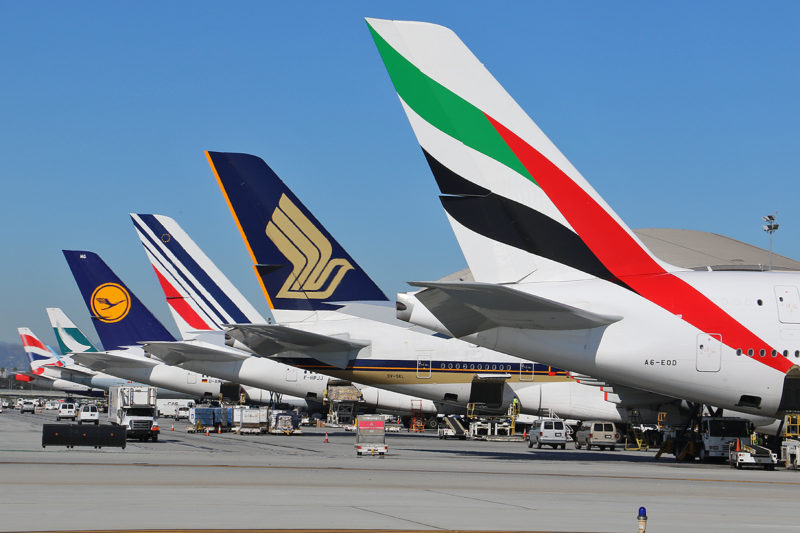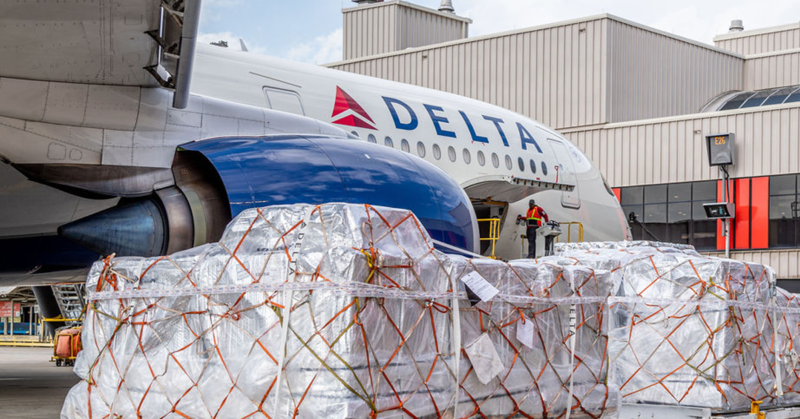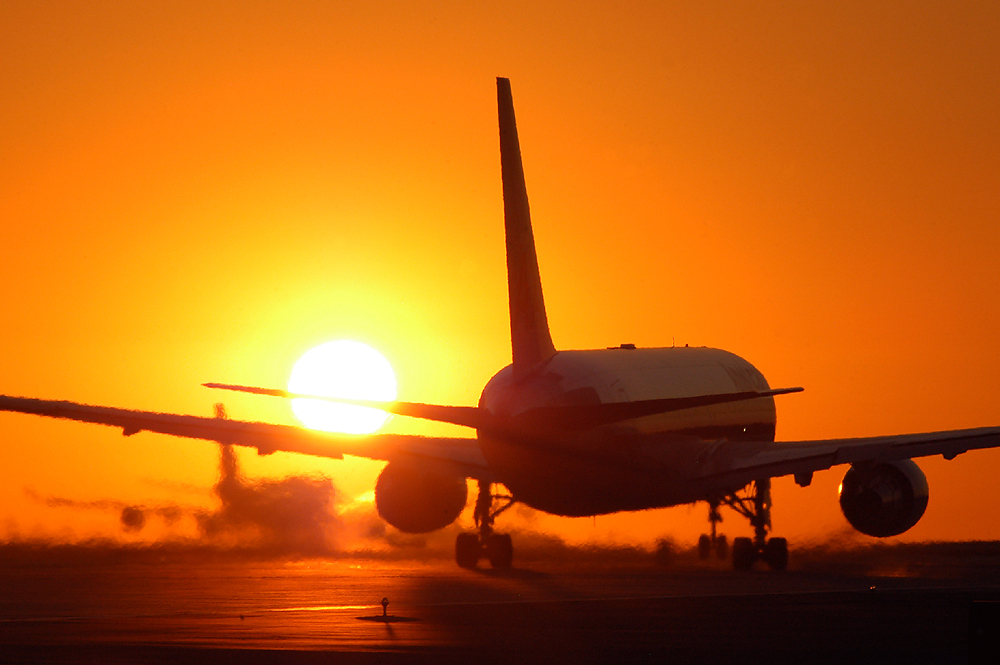The International Air Transport Association (IATA) announced a revised outlook for airline industry performance in 2020 and 2021. Deep industry losses will continue into 2021, even though performance is expected to improve over the period of the forecast.
- A net loss of $118.5 billion is expected for 2020 (deeper than the $84.3 billion forecast in June)
- A net loss of $38.7 billion is expected in 2021 (deeper than the $15.8 billion forecast in June)
Performance factors in 2021 will show improvements on 2020, the second half of 2021 is expected to see improvements after a difficult 2021 first half. Aggressive cost-cutting is expected to combine with increased demand during 2021 (due to the re-opening of borders with testing and/or the widespread availability of a vaccine) to see the industry turn cash-positive in the fourth quarter of 2021, which is earlier than previously forecast.
“This crisis is devastating and unrelenting. Airlines have cut costs by 45.8%, but revenues are down 60.9%. The result is that airlines will lose $66 for every passenger carried this year for a total net loss of $118.5 billion. This loss will be reduced sharply by $80 billion in 2021. But the prospect of losing $38.7 billion next year is nothing to celebrate. We need to get borders safely re-opened without quarantine so that people will fly again. And with airlines expected to bleed cash at least until the fourth quarter of 2021 there is no time to lose.” said Alexandre de Juniac, IATA’s Director General and CEO.

2020
The COVID-19 crisis challenged the industry for its very survival in 2020. In the face of a half trillion-dollar revenue drop (from $838 billion in 2019 to $328 billion) airlines cut costs by $365 billion (from $795 billion in 2019 to $430 billion in 2020).
“The history books will record 2020 as the industry’s worst financial year, bar none. Airlines cut expenses by an average of a billion dollars a day over 2020 and will still rack-up unprecedented losses. Were it not for the $173 billion in financial support by governments we would have seen bankruptcies on a massive scale.”
Alexandre de Juniac, IATA’s Director General and CEO
All major operational parameters in the passenger business were negative:
- Passenger numbers are expected to plummet to 1.8 billion (60.5% down on the 4.5 billion passengers in 2019). This is roughly the same number that the industry carried in 2003.
- Passenger revenues are expected to fall to $191 billion, less than a third of the $612 billion earned in 2019. This largely driven by a 66% fall in passenger demand (measured in Revenue Passenger Kilometres/RPK). International markets were hit disproportionately hard with a 75% fall in demand. Domestic markets, largely propelled by a recovery in China and Russia, are expected to perform better and end 2020 49% below 2019 levels.
- Further weakness is demonstrated by passenger yields, which are expected to be down 8% compared to 2019, and a weak passenger load factor, which is expected to be 65.5% down from the 82.5% recorded in 2019, a level last seen in 1993.
Operational parameters for cargo are performing significantly better than for passenger but are still depressed compared to 2019:
- Uplift is expected to be 54.2 million tonnes in 2019, down from 61.3 million tonnes in 2019.
- Cargo revenues are bucking the trend, increasing to $117.7 billion in 2020 from $102.4 billion in 2019. A 45% fall in overall capacity; driven largely by the precipitous fall in passenger demand, which took out critical belly capacity for cargo (-24%) and has pushed yields up by 30% in 2020.

“Cargo is performing better than the passenger business. It could not, however, make up for the fall in passenger revenue. But it has become a significantly larger part of airline revenues and cargo revenues are making it possible for airlines to sustain their skeleton international networks.”
Alexandre de Juniac, IATA’s Director General and CEO
In 2019 cargo accounted for 12% of revenues and that is expected to grow to 36% in 2020.
2021
Airline financial performance is expected to see a significant turn for the better in 2021, even if historically deep losses prevail. The expected $38.7 billion loss in 2021 will be second only to 2020 performance.
On the assumption that there is some opening of borders by mid-2021 (either through testing or growing availability of a vaccine) overall revenues are expected to grow to $459 billion ($131 billion improvement on 2020, but still 45% below the $838 billion achieved in 2019). In comparison, costs are only expected to rise by $61 billion; delivering overall improved financial performance. Airlines will still lose, however, $13.78 for each passenger carried. By the end of 2021 stronger revenues will improve the situation, but the first half of next year still looks extremely challenging.
Passenger numbers are expected to grow to 2.8 billion in 2021. That would be a billion more travellers than in 2020, but still 1.7 billion travellers short of 2019 performance. Passenger yields are expected to be flat and the load factor is expected to improve to 72.7% (an improvement on the 65.5% expected for 2020, but still well below the 82.5% achieved in 2019).
The cargo side of the business is expected to continue with strong performance. Improved business confidence, and the important role that air cargo should play in vaccine distribution, is expected to see cargo volumes grow to 61.2 million tonnes (up from 54.2 million tonnes in 2020 and essentially matching the 61.3 million tonnes carried in 2019). A continued capacity crunch due to the slow reintroduction of belly capacity, from passenger services combined with a higher proportion of time and temperature sensitive cargo (vaccines), will see a further 5% increase in yields. This will contribute to strong performance in cargo revenues which are expected to grow to an historic high of $139.8 billion.
Regional Summary
While all regions are impacted by the crisis, those airlines with larger domestic markets or with large cargo operations are performing better. The differences between the regions become more exaggerated in 2021, with Asia Pacific and North American carriers seeing the most significant reductions in expected losses.
| Region | 2020 Demand vs 2019 | 2020 Capacity vs 2019 | 2020 Profits | 2021 Demand vs 2020 (vs 2019) | 2021 Capacity vs 2020 (vs 2019) | 2021 Profits |
| World | -66.3% | -57.6% | -$118.5b | +50.4% (-50%) | +35.5% (-43%) | -$38.7b |
| North America | -66.0% | -51.6% | -$45.8b | +60.5% (-45%) | +36.4% (-34%) | -$11.0b |
| Europe | -70.0% | -62.4% | $26.9b | +47.5% (-56%) | +35.5% (-49%) | $-11.9b |
| Asia Pacific | -62.0% | -55.1% | -$31.7b | +50.0% (-43%) | +38.4% (-38%) | -$7.5b |
| Middle East | -73.0% | -64.5% | -$7.1b | +43.0% (-61%) | +23.6% (-56%) | -$3.3b |
| Latin America | -64.0% | -60% | -$5.0b | +39.0% (-50%) | +34.3% (-46%) | -$3.3b |
| Africa | -72.0% | -62.8% | -$2.0b | +35.0% (-62%) | +21.5% (-55%) | -$1.7b |
North America
North American airlines are benefitting from an earlier recovery in the US domestic market (the largest domestic market in the world) and have already restructured more extensively than other regions; including regions which supported their pre-crisis industry-leading financial performance.
Europe
European airlines rely to a large extent on international market revenues. Economies were hit by a severe 2nd wave of COVID-19; as such stronger revenues are not expected to arrive until later in 2021, with fairly widespread vaccine availability (though not at developing country ends of their markets).
Asia Pacific
- Chinese airlines and China’s economy lead the recovery, with the large Chinese domestic market allowing a return to profitability by the end of 2020.
- Success in virus control has helped some other parts of the region, ahead of vaccine distribution.
- The importance of cargo is a further driving factor, leading to this region experiencing stronger financial performance than other regions.

Middle East
Middle East airlines have been challenged by the importance of connecting traffic over Gulf hubs and elsewhere, since long-haul air travel markets have been slowest to reopen. However, airlines in this region have grown their cargo business and this has added some offset.
Latin America
- Latin American airlines have received little government support, leading to bankruptcies, and COVID-19 containment has been challenging.
- Some key markets have remained open and air travel has been helped by the opening of borders, with a negative COVID19 test requirement rather than quarantine. However, vaccine distribution and vaccination may be a little behind more developed markets; leading to a more delayed recovery in financial performance.
Africa
African airlines have also received little government support and there have been a number of failures. The relative lack of cold chain facilities in the region may delay the distribution of vaccines; this region is expected to experience a delayed recovery in financial performance.
Data source: IATA


